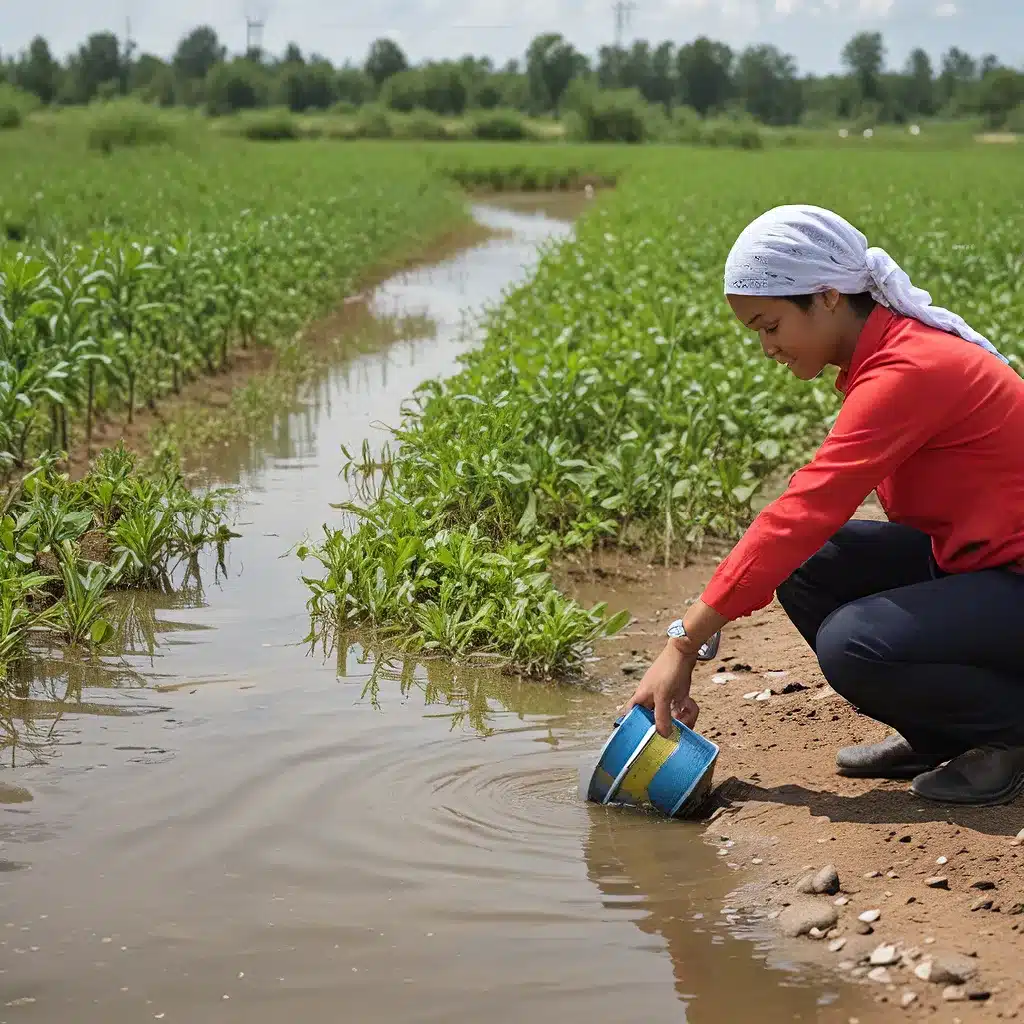
As an environmental enthusiast, I’m always on the lookout for the latest breakthroughs in sustainable resource management. And let me tell you, the water-energy-food (WEF) nexus is where the action’s at! This intricate web of interconnected systems is a veritable treasure trove of opportunities for optimization and innovation.
Unraveling the Complexity of the WEF Nexus
Imagine this: you’re trying to plan a family reunion at a coastal resort. Sure, the view of the sparkling ocean is gorgeous, but how do you ensure there’s enough clean water for everyone to drink and bathe? And what about powering the air conditioning units and keeping the kitchen running to feed the ravenous horde? Aha, the WEF nexus in action!
You see, these three critical systems – water, energy, and food – are so deeply intertwined that you can’t really address one without considering the others. Researchers have found that disruptions in any of these areas can have cascading effects on the others, leading to everything from food shortages to power outages.
Coastal Resilience: Navigating the Nexus
And when it comes to coastal communities, the WEF nexus becomes even more critical. These areas are often on the frontlines of climate change, facing threats like sea-level rise, flooding, and extreme weather events. Maintaining the delicate balance between water, energy, and food can make the difference between a thriving community and one that’s struggling to stay afloat.
“Coastal communities strive for resilience in the face of an ever-growing suite of threats by planning and preparing for numerous uncertain futures,” explains a study published in Global Sustainability. “Food, energy, and water systems are highly interconnected and essential to the well-being of coastal communities.”
Tapping into Nexus Innovations
So, how can coastal communities leverage the WEF nexus to boost their resilience? The solutions are as diverse as the challenges they face. Some innovative approaches include:
-
Multigeneration Systems: Imagine a compact, all-in-one system that generates energy, produces fresh water, and even stores food – all powered by the same integrated process. Researchers have explored these types of “multigeneration” systems as a way to reduce coastal communities’ dependence on external resources and increase self-sufficiency.
-
Floating Production: Another ingenious idea is to leverage the water itself as a resource. Floating production systems can capture waste from coastal activities and use it to grow algae and fish, which in turn provide food and biofuel for the community. It’s a closed-loop system that minimizes environmental impact and maximizes efficiency.
-
Infrastructural Ecology: This emerging concept advocates for designing human systems to work together in harmony, much like natural ecosystems. By linking power, water, sanitation, transportation, and food systems, coastal communities can create efficiencies, reduce redundancies, and enhance overall resilience.
Embracing the Nexus Approach
The beauty of the WEF nexus is that it encourages a more holistic, systems-level perspective on resource management. Instead of siloed approaches, nexus thinking prompts us to consider the intricate web of interdependencies and tradeoffs between these essential systems.
And the benefits of this approach go beyond just coastal resilience. Applying the WEF nexus lens can help optimize resource use, uncover hidden synergies, and ultimately improve the sustainability and livability of communities everywhere – from bustling urban centers to remote rural enclaves.
So, the next time you’re enjoying a cool glass of water, powering up your devices, or savoring a delicious meal, take a moment to appreciate the incredible complexity of the systems that make it all possible. And who knows, maybe you’ll be inspired to explore innovative solutions that harness the power of the water-energy-food nexus!


